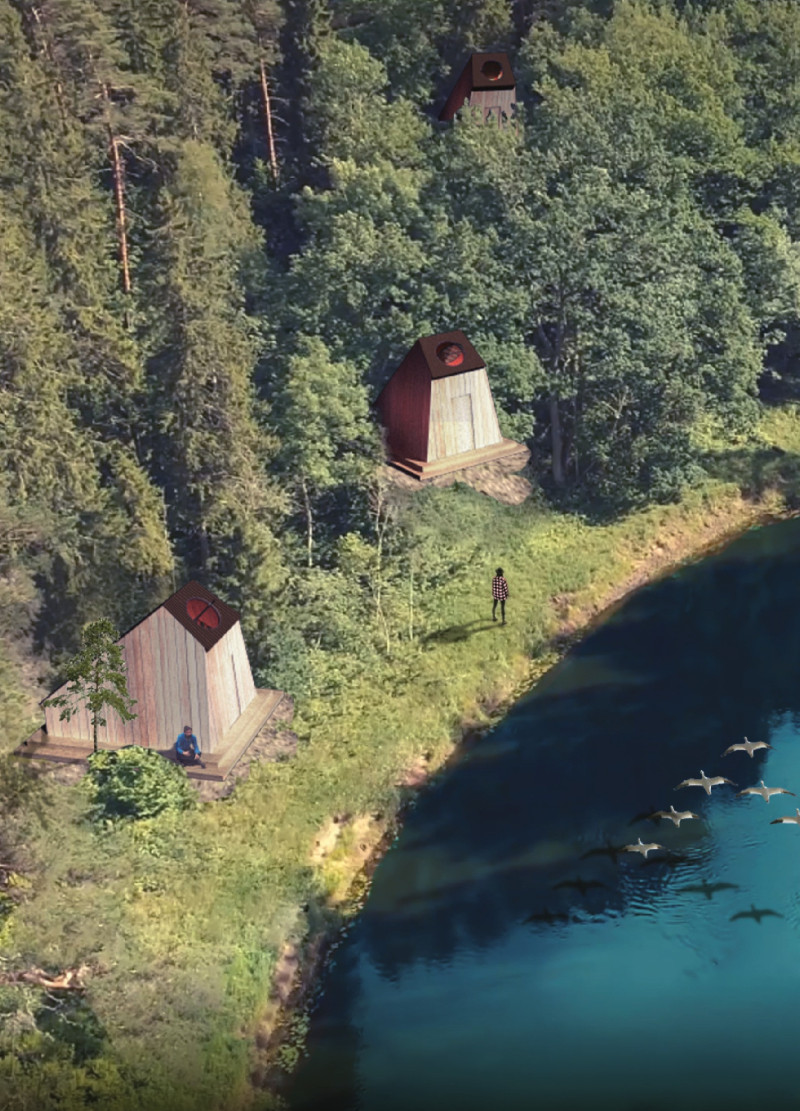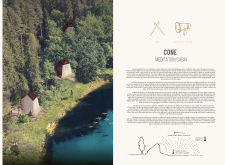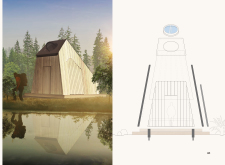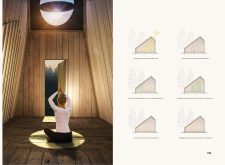5 key facts about this project
At its core, the Cone Meditation Cabin serves as a sanctuary. Its conical shape is not just a visual statement; it is a deliberate architectural choice that enhances acoustic performance, amplifying the sound of nature and creating a soothing auditory backdrop for meditation. The project effectively transforms its surroundings into an integral part of the user experience, inviting individuals to explore the nuances of sound that permeate the cabin during moments of quiet reflection.
The exterior of the cabin features an organic wood cladding, harmonizing with the natural landscape and emphasizing the project's alignment with sustainable design principles. The roofing material, likely a dark-toned metal or treated wood, complements the overall aesthetic while ensuring durability and weather resistance. This selection of materials emphasizes the importance of creating a structure that not only blends into the environment but also contributes minimally to its ecological footprint.
Inside, the Cone Meditation Cabin is well organized to facilitate meditation practices. The space is characterized by its high, pitched ceiling, which not only contributes to the cabin's acoustics but also fosters a sense of openness and serenity. Large windows allow abundant natural light to fill the interior, showcasing the beautiful juxtaposition of indoor and outdoor environments. These windows are a crucial design element, as they not only illuminate the space but also encourage users to maintain a visual connection with nature outside.
One of the standout features of the cabin is its intentional approach to sound dynamics. The design incorporates elements that guide sound waves, creating an environment where both natural sounds and human presence coexist harmoniously. This focus on auditory experience positions the cabin as not just a physical structure, but a space that actively engages users in a sensory dialogue with their surroundings.
The adaptability of the cabin is also noteworthy. The incorporation of movable wooden louvers allows users to control airflow and visibility, fostering an intimate relationship with nature while providing opportunities for personalization of the meditation experience. This capability further underscores the design's commitment to flexibility and user agency.
Overall, the Cone Meditation Cabin is a prime example of how architectural design can effectively respond to the needs of users while remaining sensitive to its environment. This project showcases a blend of aesthetic appeal and functionality, where every element serves to enhance the overall experience of meditation and connection with nature. The thoughtful choices in design and materiality contribute to an atmosphere of tranquility and introspection.
For those interested in exploring further architectural plans, sections, designs, and ideas associated with this project, a detailed presentation is available that delves deeper into the cabin's unique attributes and design principles. Engaging with these materials can provide valuable insight into the effective integration of architecture and nature in fostering mindful practices.


























